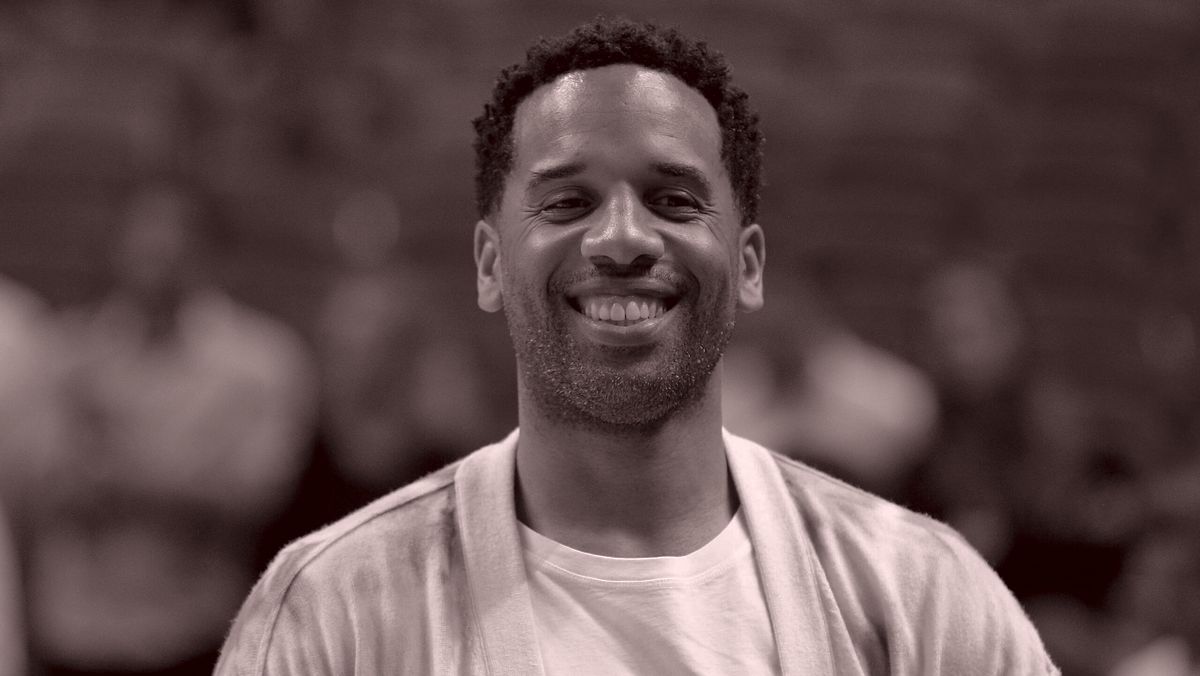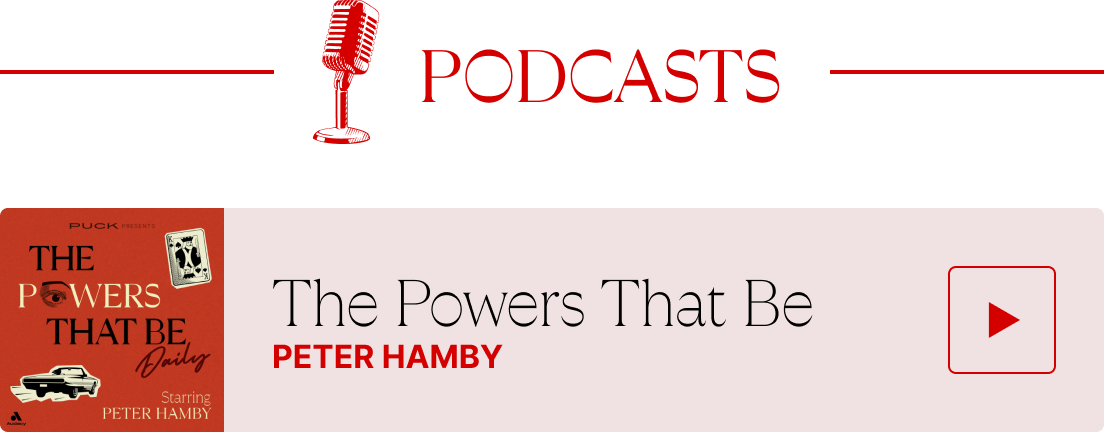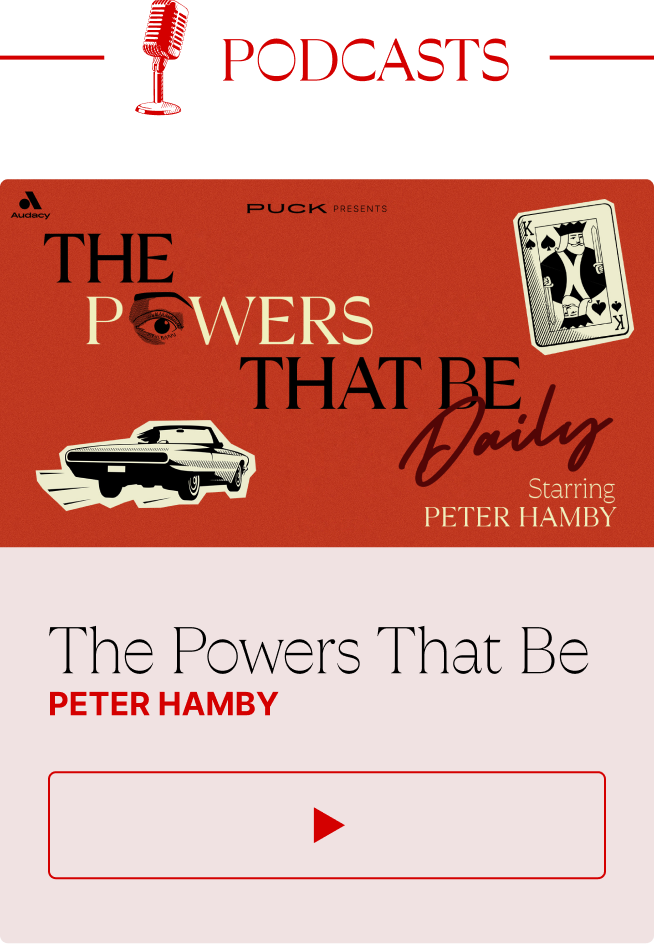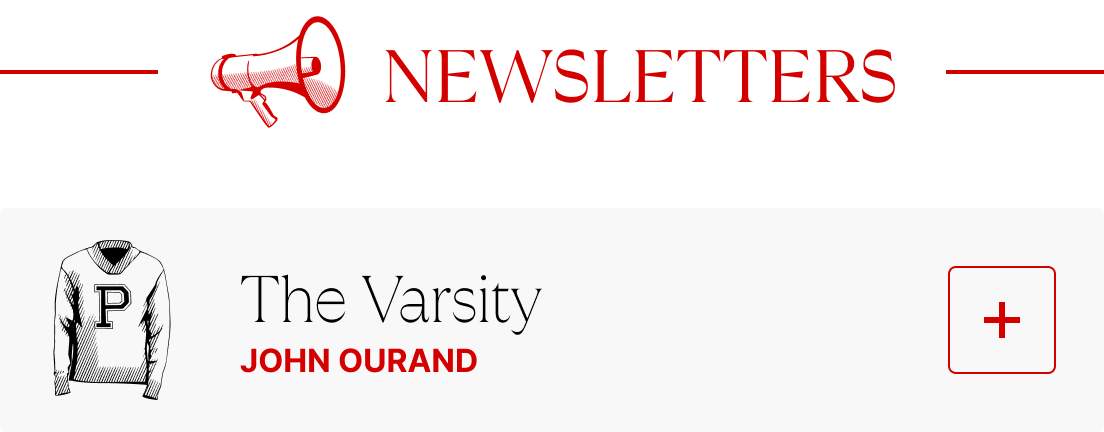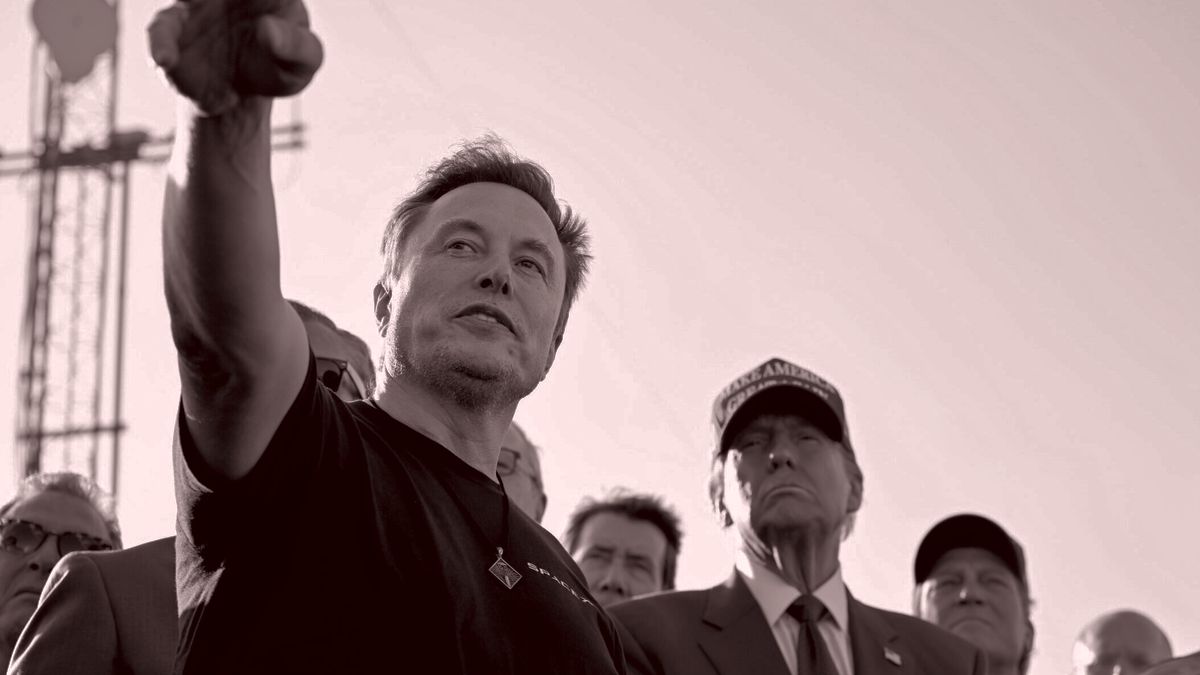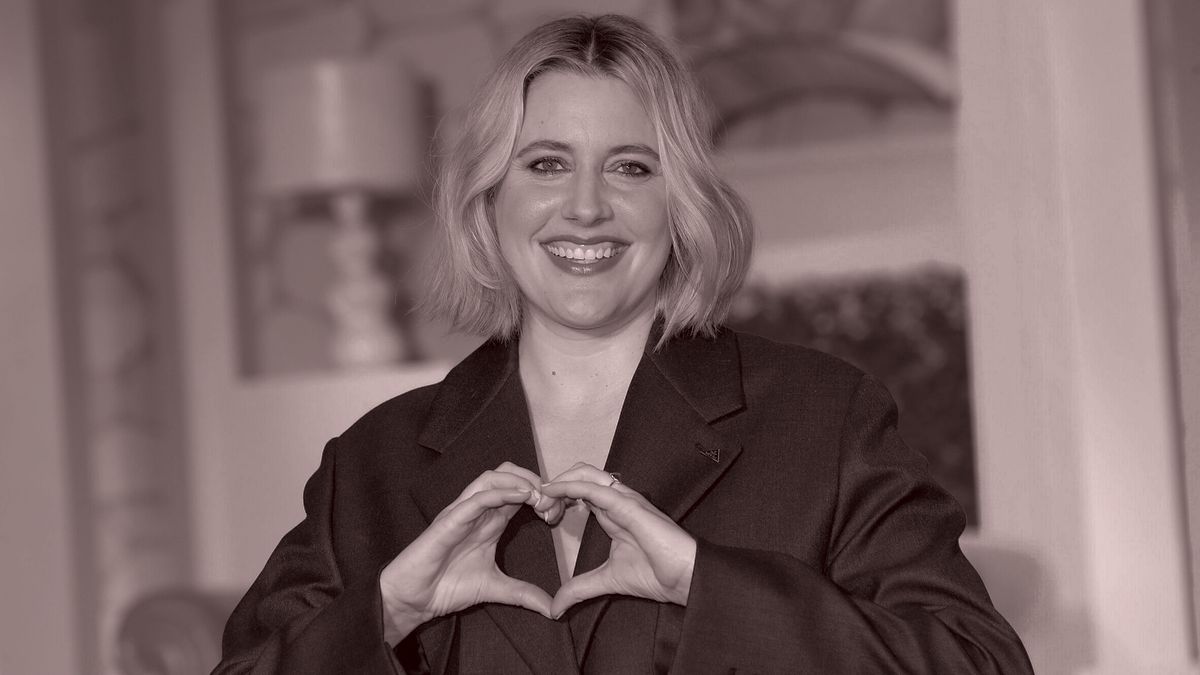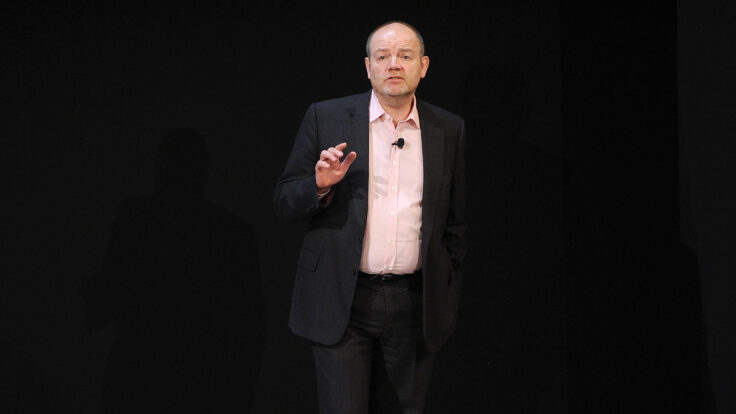Happy Friday and welcome back to In the Room. I’m Dylan
Byers.
I’m very under the weather today—no, it’s not bird flu—so for tonight’s issue, I’m handing the reins to my immensely talented partners: Eriq Gardner presents his sharp analysis of the Supreme Court’s TikTok decision; Matt Belloni relays a nine-point blueprint for regaining Hollywood’s primacy in the film-production business; and John Ourand gets the skinny on
Maverick Carter’s fantasy of standing up an international competitor to the NBA.
🍸 Also, on The Grill Room…: Amid the ongoing catastrophe in Los Angeles, local news has never been more vital to addressing community issues. On the latest episode of The Grill Room, NBC News’s Jacob Soboroff joined me to share his personal and professional experience
covering the fires, which destroyed his childhood home in the Palisades. He also discussed the importance of public figures offering solace during these times of devastation. Plus, with Trump’s inauguration just days away, Jacob offered an inside look at his extensive reporting on immigration at the border. Listen to the full episode here.
Now, here’s Eriq and Matt…
|
|
|

|
Eriq Gardner
|
|
- TikTok’s legal quagmire: In the
end, the Supreme Court landed exactly where I expected on TikTok. The justices rallied around John Roberts’ skepticism over the Chinese-owned company’s argument that regulating corporate control equals regulating speech. They also leaned into the uniqueness of this case, emphasizing the national security angle, meaning they’re crossing their fingers that this
ruling won’t set a First Amendment precedent beyond TikTok.
Moments after the decision, TikTok C.E.O. Shou Zi Chew posted a video of himself, saying, “On behalf of everyone at TikTok and all our users across the country, I want to thank President Trump for his commitment to work with us to find a solution that keeps TikTok available in the United States. This is a strong stand for the First Amendment and against arbitrary censorship. … We are
grateful and pleased to have the support of a president who truly understands our platform—one who has used TikTok to express his own thoughts and perspectives, connecting with the world and generating more than 60 billion views of his content in the process. More to come.” Very subtle.
The focus is now on what Trump will do next, after his failed plea to SCOTUS, via amicus brief, to delay the ban and allow him to work out a deal. Trump, I predict, will soon signal that his attorney
general won’t enforce the law. Why else invite Chew to sit with him on the dais at the inauguration? And though this week Trump’s nominee for A.G., Pam Bondi, strongly pushed back against senators’ repeated accusations that she’d blindly do Trump’s bidding, saving TikTok—or merely not killing it—is unlikely to warrant a showdown.
However, as I noted earlier this week, the next president after Trump would have reasonable legal standing to retroactively collect
hundreds of billions of dollars in fees—maybe more—from Apple, Google, and Oracle, if they continue to host the app, for defying the Protecting Americans From Foreign Adversary Controlled Applications Act. So what might reassure the tech companies? I sent a message to Apple’s general counsel, Kate Adams, who, apart from the nine Supreme Court justices, is the most important legal mind on this topic right now. I’ll let you know how she responds…
|
|
|

|
Matthew Belloni
|
|
- Hollywood’s recovery plan: The best
way entertainment business leaders can help L.A. recover is to help the industry recover in L.A. Both the Palisades and Altadena areas are big hubs for entertainment people, but will they stay? I’ve already heard the We’re outta here sentiment from one industry friend who lost everything. (For the record, I’ve heard the No way are we leaving sentiment a lot more.) Local jobs and opportunities are the best way to keep this industry from scattering, and that’s something the
government can work with industry leaders on…
So far, only Bob Iger at Disney has publicly gone beyond the immediate disaster relief. “We want to help rebuild,” he told The New York Times. “Can we help in setting up temporary schools? Can our Imagineers help design new town centers? Rebuilding is not just about money.
It’s about ingenuity and determination.” That sounds like Iger wants to be more involved—remember, he considered running for president at one point—though all the major studios, streamers, and tech companies have stepped up with varying donations to the recovery.
California may soon pass a tax credit package valued at $750 million, which would help a little in luring back productions. But practically speaking, it’s not nearly enough to compete with places like Georgia or the U.K.
The benefit of one-party rule in California is that Gavin Newsom, Iger, and other leaders could do something, if they choose. A few months ago, a very smart executive sent me a good nine-point blueprint to help keep productions big and small in town. These suggestions are wonky but they feel a lot more urgent now, so I’ll include them:
|
- Get the base rebate rate for films under $25 million to at least 30 percent before uplifts.
- For films under $25 million, allow producers to elect to sell the credit to third parties or get a refund over three years, which will
unlock the ability to finance the incentive in the commercial bank markets. Allow the sale to third parties to work like the Georgia system, where it can effectively be syndicated to many buyers.
- Qualify above-the-line spending (meaning fees for stars and filmmakers), including writing steps that were paid within some reasonable period prior to qualification, subject to some per-person and percentage-of-budget caps.
- Create
uplifts for hitting diversity, apprenticeship, and jobs-ratio targets.
- Qualify contingent compensation like the U.K. scheme does, to incentivize more producers and platforms to give it.
- Figure out some way so that qualification can happen at any time during the year instead of in set windows.
- Apply the above to television projects with gross budgets under like $6 million or $7 million per
episode.
- Create chained uplifts for sequels and subsequent seasons. That means for each initial film or TV series that qualifies for the credit, an extra 2.5 percent for each sequel or season that shoots in California, up to some cap. If you don’t qualify for the credit in any subsequent season, the uplift chain breaks. That incentivizes platforms to re-up California projects, and for producers to keep them here.
- Lastly, they
should consider introducing a postproduction and visual effects credit for projects that spend at least 80 percent of the post and/or VFX spend here. That part of the pipeline is the next to leave, especially once it’s impacted by A.I. Incentivize innovation and companies to be here instead of offshore.
|
|
|
Maverick Carter, LeBron’s longtime wingman and business partner,
shocked the sports world with the news that he was attempting to raise $5 billion to take on the NBA. Is this a new LIV or a basketball F1, or something more quixotic?
|
|
|
When Saudi Arabia’s Public Investment Fund launched LIV a little
more than three years ago, professional golf was ripe for disruption. International players dominated the sport while many of the PGA Tour’s top pros, like Phil Mickelson, griped about various systemic issues. In the intervening years, LIV has hardly been a roaring success—it suffered reputational setbacks, was criticized as a sportswashing apparatus of the Saudi government, and its losses have to be in the hundreds of millions of dollars. Nevertheless, LIV has been formidable
enough that PIF has convinced the PGA Tour to sell it a minority stake, pending regulatory approval.
This dynamic has led to conjecture about the next sport that could see a LIV-style competitor. Many sports media executives and investors suspected that tennis was a natural possibility, given the international diversity among its top players. By a similar logic, others have pointed to professional
basketball, especially considering that so many of the sport’s top young stars hail from outside America—Victor Wembanyama, 21, is from France; Luka Dončić, still only 25, is from Slovenia; perennial M.V.P. Nikola Jokić, 29, is from Serbia; and fellow former world champ and M.V.P. Giannis Antetokounmpo, 30, is from Greece. Is there a world, fanciful investors have wondered, where you could convince Wemby to move to his
native France for more than the $14 million per year he currently makes on a rookie contract in Texas?
Proponents of the latter theory got a boost last night when Bloomberg reported that LeBron James’s business partner, Maverick Carter, was
advising a group of investors hoping to raise $5 billion to form an international basketball league. The would-be league’s backers, according to Bloomberg, include Skype co-founder Geoff Prentice, former Facebook executive Grady Burnett, and investment firm SC Holdings (and its
co-founders, Jason Stein and Daniel Haimovic). UBS and Evercore have reportedly been hired to find the money. This is an unusual crew of individuals and investors for this sort of project, which explains why Carter appears as the face of the deal.
The story, of course, raised all sorts of fascinating questions. Would LeBron be involved? (No, according to multiple
knowledgeable sources.) And would this entity be more akin to LIV or, well, UFL? Would this newfangled league really be able to disrupt an organization that just signed an 11-year, $76 billion media deal and already has a large and growing international audience?
Sources close to the group balked when I floated the LIV comparison. They also pushed back on any comparison to the UFL, the
spring football league that acts as a feeder to the NFL. Instead, they described a slightly more modest global basketball league that would mimic the Formula One schedule, with games played in eight cities. Six men’s teams and six women’s teams would play round-robin tournaments in each location, over two weeks, with a champion crowned at the end of each stop. In other words, the group is not looking to run a traditional basketball league, like the NBA or the EuroLeague, which many had assumed
given the fundraising goal. Instead, they want to attract a global audience outside of North America, and the best way to do that, it would seem, would be to entice the biggest international stars to participate.
Very basic details still need to be ironed out, including when the league plans to launch, and when it would schedule the games. Would it compete with the NBA from October through June, or play in
the offseason? Indeed, it’s all so incredibly murky at the moment. All that’s clear is that its success—like that of any sports league—will come down to the media deals it’s able to sign. And we are living in an age when live sports content is not only supporting the linear bundle but also increasingly the engine of streaming growth. And you can laugh—as many do—but nontraditional sports (like bull riding or a YouTube star pummeling a former heavyweight champ or golf indoors) are
increasingly successful in this environment.
The other factor motivating leagues to work with the large-cap streamers is their global reach. Ever since David Stern’s earliest days, he knew that the NBA’s largest total addressable market existed overseas. But it’s a big world out there, and there may be room for a fringe competitor as well.
|
|
|
Join Emmy Award-winning journalist Peter Hamby, along with the team of expert journalists at Puck, as they let you
in on the conversations insiders are having across the four corners of power in America: Wall Street, Washington, Silicon Valley, and Hollywood. Presented in partnership with Audacy, new episodes publish daily, Monday through Friday.
|
|
|
A professional-grade rundown on the business of sports from John Ourand, the industry’s preeminent journalist,
covering the leagues, players, agencies, media deals, and the egos fueling it all.
|
|
|
Need help? Review our FAQ page or contact us for assistance. For brand partnerships, email ads@puck.news.
You received this email because you signed up to receive emails from Puck, or as part of your Puck account associated with . To stop receiving this newsletter and/or manage all your email preferences, click
here.
|
Puck is published by Heat Media LLC. 107 Greenwich St, New York, NY 10006
|
|
|
|

